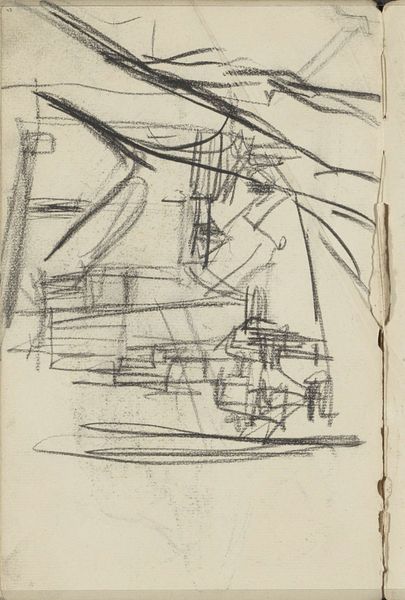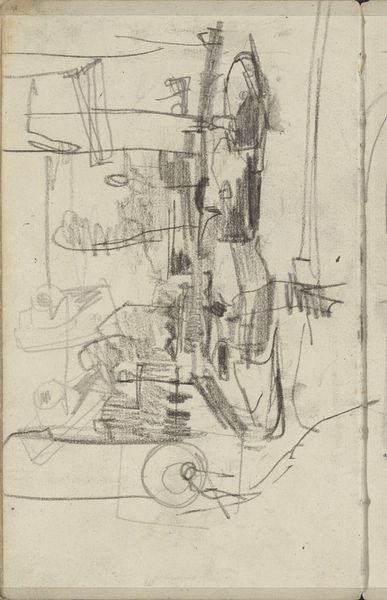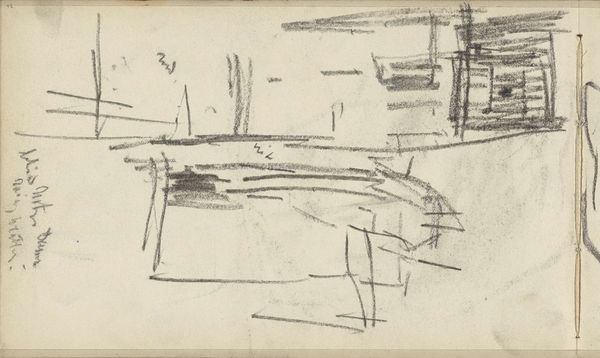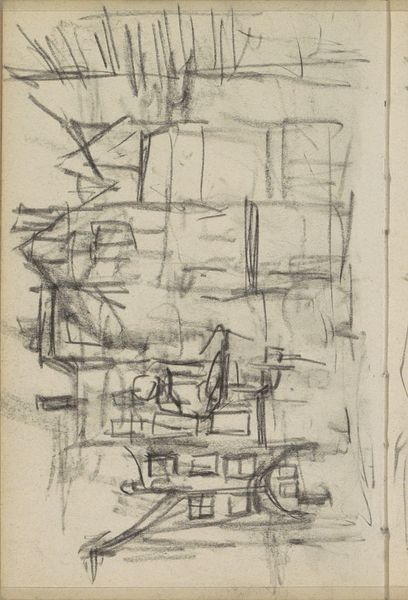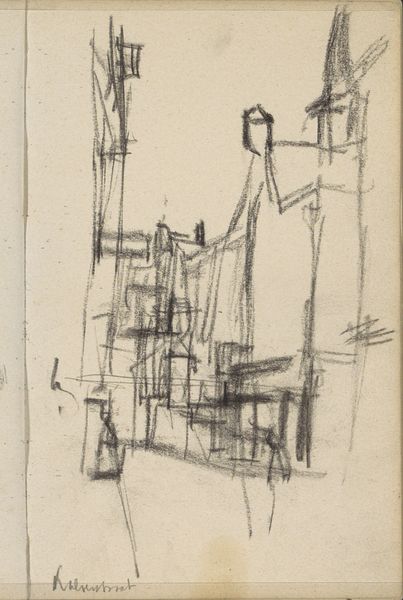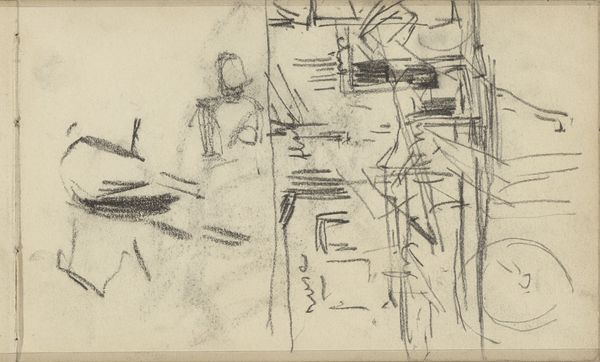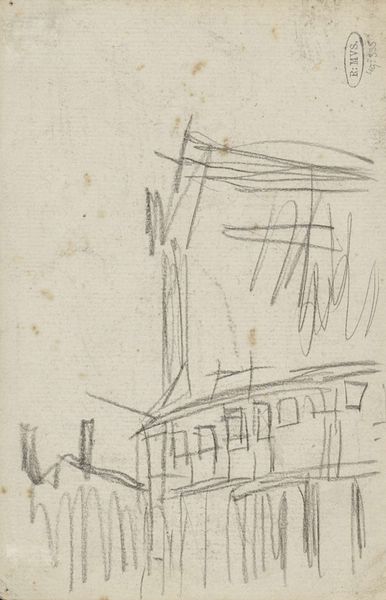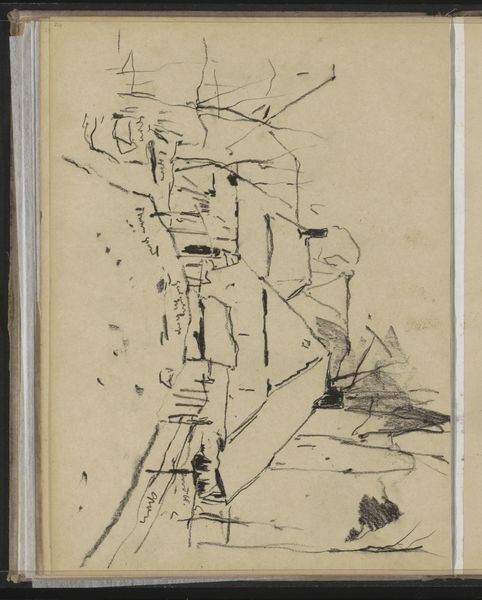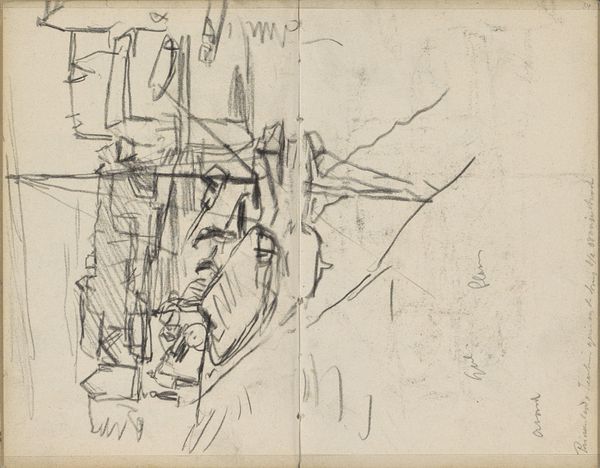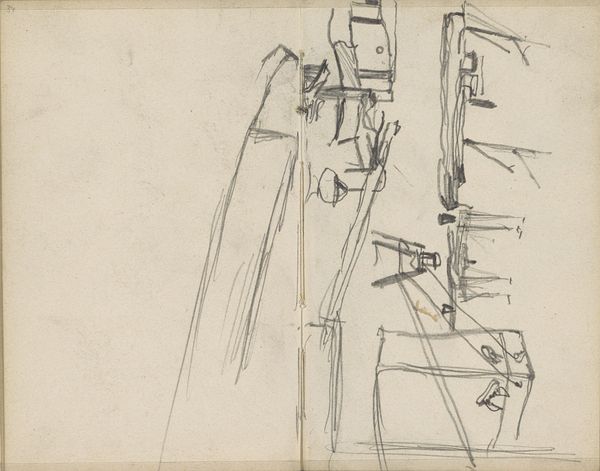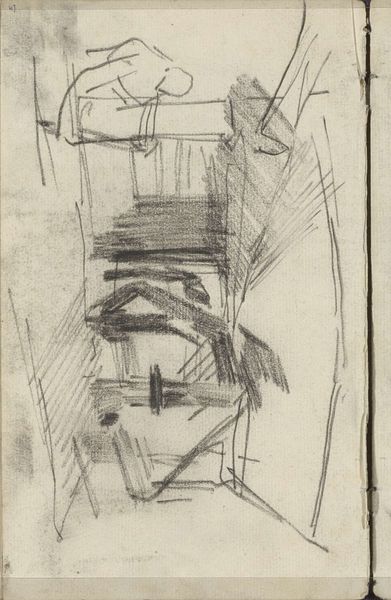
drawing, pencil
#
drawing
#
quirky sketch
#
dutch-golden-age
#
impressionism
#
pen sketch
#
landscape
#
personal sketchbook
#
idea generation sketch
#
sketchwork
#
ink drawing experimentation
#
pen-ink sketch
#
pencil
#
sketchbook drawing
#
storyboard and sketchbook work
#
sketchbook art
Copyright: Rijks Museum: Open Domain
Curator: This sketch, believed to be of moored boats, comes to us from George Hendrik Breitner, likely created between 1887 and 1891. The Rijksmuseum is its current home. Editor: There’s a restless energy about this piece, isn’t there? It's all sharp angles and shifting planes, like a landscape caught mid-transformation. You can almost feel the wind. Curator: Absolutely. And while Breitner is often associated with Impressionism, a drawing like this provides glimpses of earlier Dutch masters through its compositional strategy, and perhaps a presage of movements yet to come in the use of line and shading to convey the scene. We're seeing a real working process laid bare. Editor: Speaking of “working,” what stories might those boats have to tell? Beyond aesthetics, it brings questions of labor, trade, and movement. What did it signify to capture such everyday scenes at that time, particularly as urbanization increased in Amsterdam? The location itself takes on new layers. Curator: That's a great point. In the Netherlands boats were central to everything: transport, trade, warfare. By the time Breitner puts pen to paper, they already held a powerful symbolism, one the artist likely took for granted. Editor: And beyond its symbolic weight, I think it gives us room to think about our modern moment, in a society reliant on global shipping. Here we are in a museum confronted by one small aspect of that web, but without it, the artwork doesn’t end up in the museum or the gallery. It helps center the labor of so many into our visual interpretations. Curator: The marks on the paper are simple, just graphite and perhaps a bit of ink, but it invites layered thoughts. What a seemingly spontaneous drawing can spark! Editor: Exactly! It brings historical depth, contemporary relevance, and hopefully helps broaden how we discuss and experience the Dutch Golden Age.
Comments
No comments
Be the first to comment and join the conversation on the ultimate creative platform.
